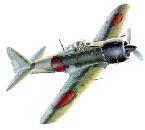el cid again
Posts: 16922
Joined: 10/10/2005
Status: offline

|
Scenario 105 Kiddo Butai Theory
The original concept for a pure carrier task force (rather than a carrier as an aircraft auxiliary that searched for and tried to damage the enemy fleet prior to the main engagement between the line of battle ships) was that of Vice Admiral Ozawa. Probably the best carrier theorist in the world in 1941, the Doro Nawa Unit (too late planning group) decided he should command the KB on its initial raid against the United States Fleet.
As most students of naval history know, a task force usually has several task groups, and these in turn usually have several task elements. In the case of a pure ship task force, task elements are ships. Naval operational organization differs from naval administrative organization, although sometimes an administrative unit is also an operational one. In administrative terms, KB included three carrier divisions, a division of battleships, a division of cruisers, and most of a destroyer squadron (which on paper would include a light cruiser and 12 destroyers - but the number 12 was always to included ships not available for actual operations - so operational numbers were always slightly less than that,) But in operational terms, another of admiral Ozawa's concepts was the formation of operational task groups which included carriers, heavy cruisers or fast battleships, and destroyer. As taught on paper, there could be three such task groups. In practice, when he commanded in a carrier battle later in the war, two were formed.
In scenario 105 two major task groups are formed named Kiddo Butai Div 1 and 2. Division 1 includes the older ships, some of them not able to make the modern fleet speed of 36 knots. That includes Akagi and Kaga, and both Kongos, as well as the original CL and the original Yugumo class destroyer assigned to the task force, and 4 Kageros. Division 2 includes the faster Shokaku and Zuikaku, both Tone class cruisers, a CL not historically asigned, the Yugumo herself, and the other four Kagero's originally assigned. Hiryu and Soryu are split - one to each division - not because they do not form a natural division which can be the foundation of a task force but because enough escorts could not be found to permit three task groups given all the other operations in the start of war plan. It also represents probably the ultimate of operational efficiency in the era. By midwar, the USN was operating groups of three carriers - typically two CV and a CVL. The time to assemble air strikes is less, and the loss of a carrier to battle damage is less catastrophic to the fate of the task group - making its ultimate success more likely. In the case of Scenario 105, these two task groups are together, with 2 assigned to follow 1. Division 2 is commanded by Rear Admiral Yamaguchi, possibly the second most able Japanese carrier commander.
In Scenario 105, there is also a Ni Butai - Ni meaning 2 or Second. In stock and most mods, this Task Force is called "IJN Cruisers" - although in fact it is a carrier task force with CVL Ryujo. Here we add the CVL Zuiho to the task group/force, add the fourth member of the CA division back, and add a CL as well. The assigned commander is Rear Admiral Fujita, one of the best carrier commanders - because the only better choice - Admiral Nugumo - is a Vice Admiral - too important for a mere glorified CVL division. The only 'real' CVE - Taiho - replaces Zuiho at Kure, where it joins Hosho - a nominal CVL classified as a CVE.
In Scenario 105, there also are differences in the assigned aircraft. Most significant of these is the inclusion of a recon variant of the Kate - precursor of a concept IJN later developed more widely. Prototype recon versions of Val were introduced at Midway, and later in the war the C6N1 was developed and intended for late war use on every large carrier. Here the two existing prototype C3N1s are joined by converted B5N1s (to the same standard) - in a lovely camo finish designed to make the planes hard to see. Both Hiryu and Soryu get a flight, and Akagi, with its larger capacity, gets an entire squadron (termed 'unit' by JNAF). In addition, both the CLs are assigned an D11A1 Laura night reconnaissance "floatplane" - so classified because it operates from small ships - it really is a tiny flying boat - like the Walrus. Designed to fly all night so it can land in daylight, painted entirely black, these represent a unique JNAF development. In this case, the planes included the special "night glasses" issued by IJN - something RHS also puts on major warships. "Night Glasses" is a device that is a fairly low probability of detection radar in software terms. The idea of these planes is to try to track all night an enemy force detected the previous day - permitting a dawn engagement without needing to search for it.
< Message edited by el cid again -- 9/1/2012 6:04:27 AM >
|
 Printable Version
Printable Version









 New Messages
New Messages No New Messages
No New Messages Hot Topic w/ New Messages
Hot Topic w/ New Messages Hot Topic w/o New Messages
Hot Topic w/o New Messages Locked w/ New Messages
Locked w/ New Messages Locked w/o New Messages
Locked w/o New Messages Post New Thread
Post New Thread